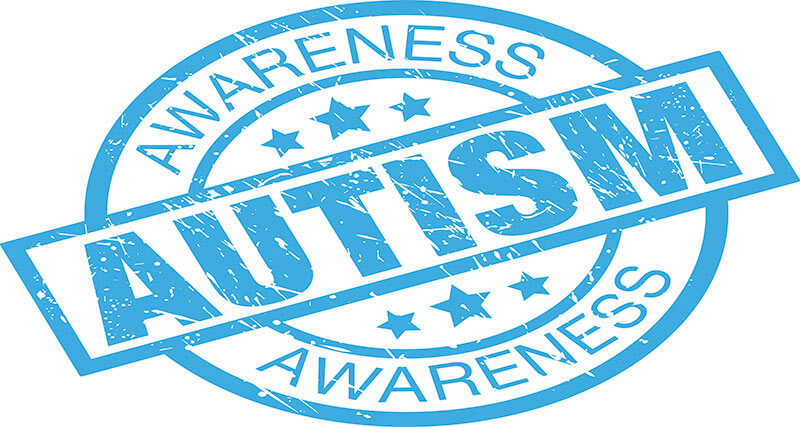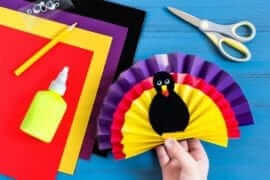5 Fun Ways to Integrate Autism Awareness at all Grade Levels
School – a safe place filled with smiling faces of peers and teachers. A place where relationships flourish and individuality is discovered. As a middle school science, special education teacher, I am intrigued (and challenged) by the diverse amount of students I encounter each day. By my age, I have been educated and understand that many people have differences – it’s what makes our world so interesting! However, children and adolescents often believe everyone else’s lives are identical to their own.
In recent years, there has been an increase in the amount of students diagnosed with Autism Spectrum Disorder (ASD) in the state of New Jersey. On one hand we acknowledge that direct support is available to help each individual achieve maximum educational success, but on the other we educators tend to feel that we could always give more.
Why not indirectly support kids with ASD by educating their peers on how to accept and embrace diversity? Students with autism experience challenges with social interactions, sensitivity, communication, and exhibiting repetitive behaviors, and we can address these challenges by promoting among their peers various ways to properly handle them. Below I have shared a list of five of my favorite approaches to integrate autism awareness at all grade levels. And they can also be effective for doing the same for just about any special need.
1. Teach Them Young!
(Elementary)
Some of our most critical values are instilled in us from a young age, which is why we need to promote the power of positivity from the start. We can begin with exemplifying character traits by celebrating differences. I like to show my kids a great scene from Sesame Street where Julia, the newest member of the bunch who has autism, is introduced. It’s an inspiring and fun way to introduce the topic. In addition, teachers can begin a daily routine (which, by the way, is also great for children with autism) in which students enter class each morning with friendly, but different variations of saying “hello” to one another.
Julia is an excellent, kid-friendly example of portraying autism to children. The videos below include the other characters accepting her for who she is and explaining to others how to comfortably approach and interact with her. Students can mimic these examples in the classroom as they practice inclusivity and promote diversity and acceptance from a young age.
Watch It! “Sesame Street: Meet Julia”
Watch It! “Different Ways to Say Hello with Julia and Rosita”
2. Explore Your Traits.
(Middle School)
If you’re searching for variety (and enjoy science as much as I do), this next activity could be for you! This can be a beginning of the year “ice breaker,” a mid-year lesson (if you can include heredity in your curriculum), or a fun and engaging activity to break up the daily routine. Exploring physical traits is a great option. As a science teacher, I recently piloted a wonderful “Trait Tracker” activity from Teachers Pay Teachers (linked below). As a class, we individually discussed each physical trait provided and colored in the correct one that we acquired from our parents. Then, students were required to find other friends with traits that were on their paper and have them sign their name. This was a great for practicing various means of communication, while also providing a context for recognizing everyone’s uniqueness.
In addition, as Autism Awareness month approaches, we teachers can pitch an idea to host a classroom, grade-wide, or school-wide assembly or after school event based on the ideas of anti-bullying, methods of spreading kindness, and healthy, team-building activities to enforce these concepts.
Watch It! Temple Grandin, “The World Needs All Kinds of Minds” TED Talk
An educational, short video of Temple Grandin, an animal science professor who happens to be autistic, explains why the world benefits from having various kinds of minds.
Try It! “Trait Tracker” Lesson – Teachers Pay Teachers (Maniacs in the Middle)
3. Calling All Artists!
(Any grade level)
Everyone loves a good puzzle now and again. And it just so happens that a puzzle is the logo for autism awareness! Have students complete a puzzle of any kind, but do not tell them why. Once the masterpiece has been completed, host a whole-group classroom discussion about what their puzzle was and how they assembled it. Students should realize that many pieces needed to be utilized in order to create the beautiful picture. This can be a metaphor for how it is imperative that we join hands when we wish to complete something great. This also promotes the concept that though each piece looks different, all are needed to complete the greater picture.
Following this engaging activity, students can write down some of their unique traits and color their own paper puzzle piece. These can be displayed together on the classroom door to promote diversity and acceptance as everyone walks into the room each day, reminding everyone to celebrate differences. For higher level examples, students could create clay models, or even use papier-mâché techniques to create personalized puzzle pieces!
Download It! There’s also this great idea for your bulletin board available FREE on Teacher’s Pay Teachers.
You might also be interested in these autism awareness door decorations ideas available on the Plymouth Rock Teachers’ Lounge.
4. Embracing Diversity:
(High School)
In older adolescents, the comprehension of differences is greater since maturity levels have increased. You can have students write a short essay on who they are, what values and morals they have acquired throughout the years, and acknowledge their own physical and personality traits. Once completed, teachers can challenge the students to find their “twin” and their “opposite.” Often times, teens tend to stick with individuals within their comfort zone who share similar interests, rather than choosing to embrace diversity. Students will be required to sit with their “opposite” for 5 minutes and have an informal Q&A session. Students will then be required to revisit their essay to include information about their “opposite” and how someone who seems so different to them may not actually be so threatening or hard to relate with after all.
Watch It! I Am Sam (PG-13)
This is a wonderful film that portrays autism and living daily life with special needs. It will need to be approved by an administrator for its rating, but students could also watch at home with parental approval and discuss their ideas.
5. Organize an Autism Awareness Spirit Week.
(Any grade level):
Once you receive approval from administrators, school staff can plan a “spirit week” with various components that represent respect, kindness, and togetherness. For the duration of the week, teachers could be encouraged to hang blue lights (i.e. string holiday lights on boards, windows, or desks) in their room to “Light it Up Blue” to spread Autism Awareness. The last day would be the day everyone will wear the colors of the “autism ribbon” to recognize the importance of not only Autism itself, but inclusion as a whole.
Example:
- Monday: “Be a Good Sport” – favorite team jersey
- Tuesday: “Be an Individual” – crazy sock day
- Wednesday: “Be Comfortable” – PJ day
- Thursday: “Blend Together” – school spirit wear
- Friday: “We All Fit Together” – grades will wear assigned color for autism ribbon (red, yellow, blue, and green). For high school, consider awarding the class who exhibits the most spirit, creativity or participation a special award.
With each new day, there is always room to learn something useful to broaden our horizons about ourselves and how we treat others. As an educator of early adolescents, I often aim to gently remind students to simply be patient if a classmate with autism (or special needs) is struggling with something that seems “easy” to them. Do not become upset if the student does not want to speak to you at the moment, and be sure to celebrate each success, no matter how small – it will truly make their day.
The trick is to empathize with the student and feed off of their energy! Like a light switch, their mood can be changed in an instant: their pencil might not be sharpening, or someone could be speaking too loudly. I try and educate my students to be gentle and kind, which should apply to everyone daily. As cliché as it sounds, treat others how you would expect to be treated – good things sure do happen to good people who take the time to care.





